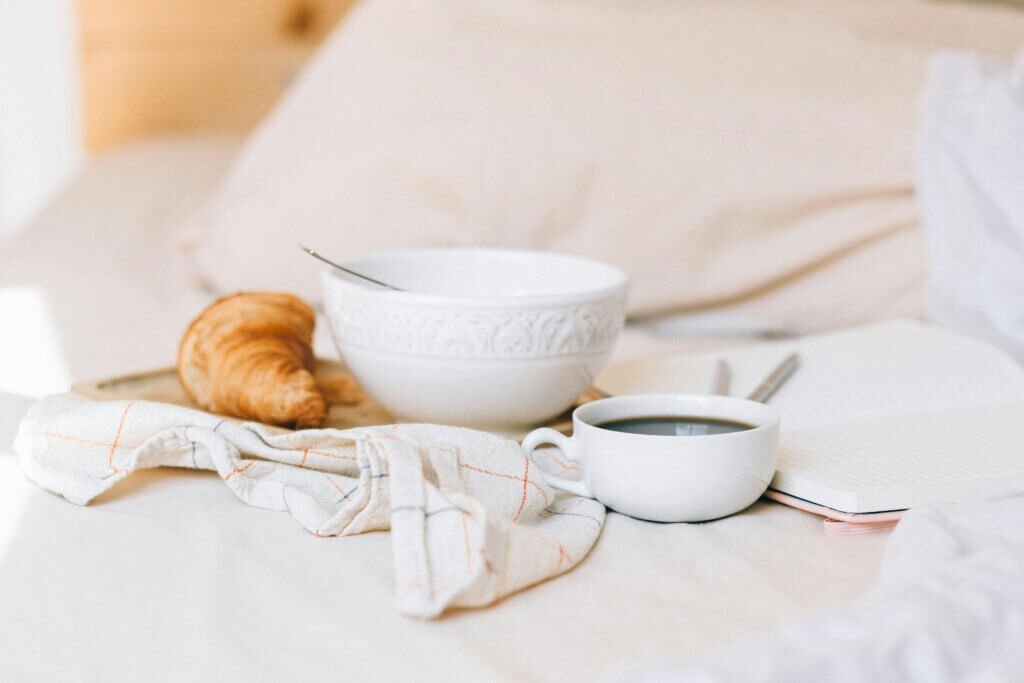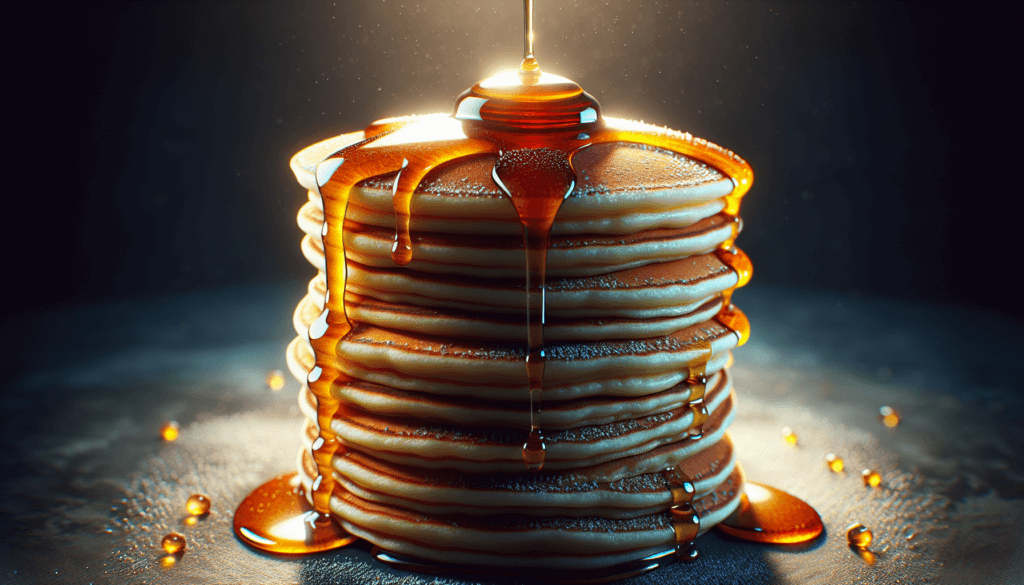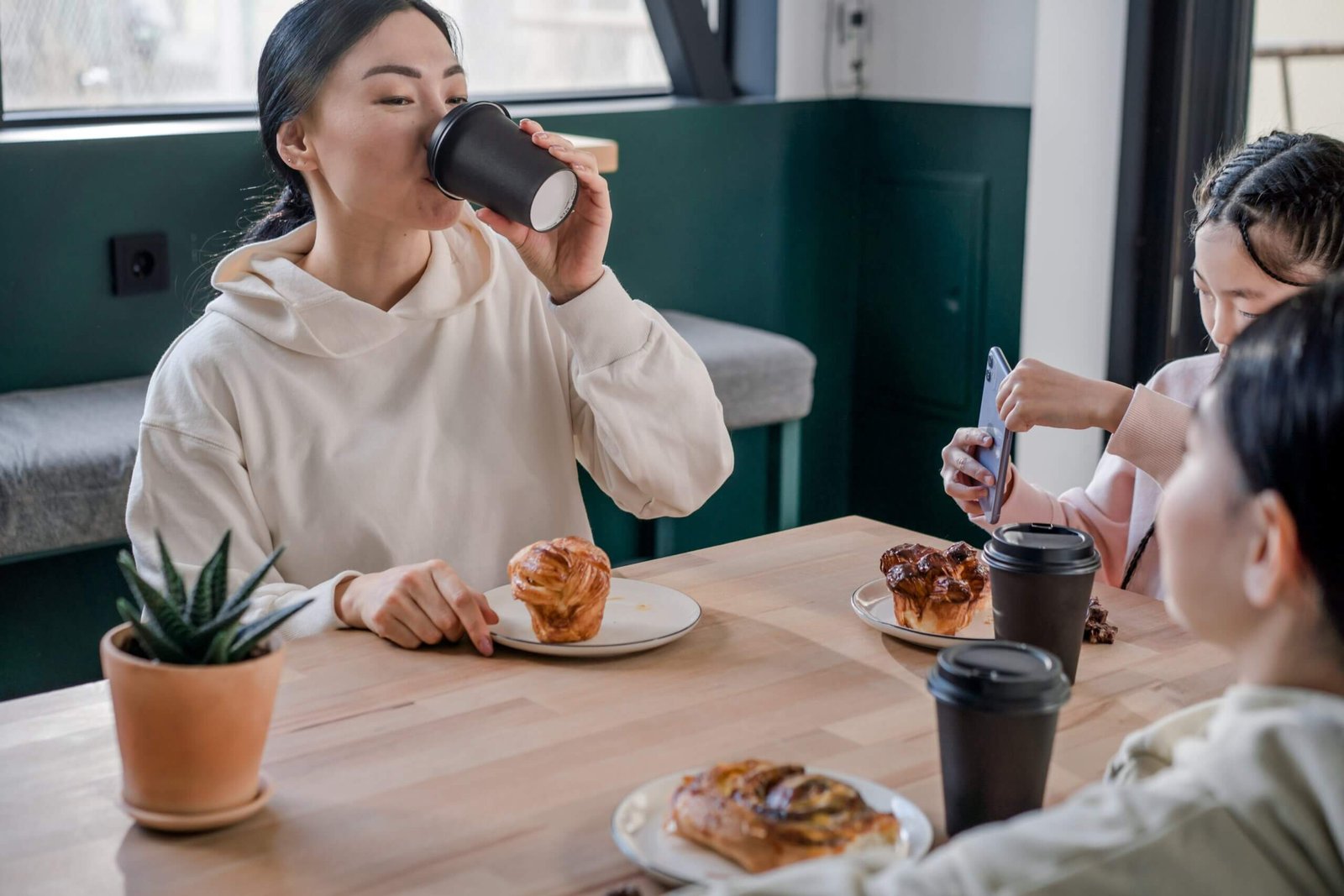Imagine waking up on a lazy Sunday morning to the irresistible aroma of freshly made fluffy pancakes wafting through the air. Your taste buds are instantly tantalized, and you can’t resist diving headfirst into a stack of fluffy goodness. But instead of rushing to your favorite breakfast joint, why not bring the magic into your own kitchen? In this article, you will discover the secrets to creating mouthwatering, melt-in-your-mouth pancakes right in the comfort of your own home. Get ready to amaze your family and friends with your newfound pancake prowess.

Choosing the Right Ingredients
Flour
Choosing the right flour is crucial for achieving fluffy pancakes. All-purpose flour works well and is readily available in most kitchens. However, if you prefer a lighter and fluffier texture, you can use cake flour instead. It has less protein, resulting in a more tender pancake. Gluten-free flour blends are also available for those with dietary restrictions or preferences.
Baking Powder
Baking powder is the magic ingredient that helps pancakes rise and become fluffy. It is what gives pancakes their airy texture. Be sure to check the expiration date on your baking powder to ensure its effectiveness. Using fresh baking powder will guarantee the best results.
Sugar
Sugar not only adds sweetness but also helps with browning and caramelization. It contributes to the overall flavor and adds a touch of decadence to your pancakes. You can adjust the amount of sugar based on your preference.
Salt
Do not underestimate the importance of salt in pancake preparation. Salt enhances the overall taste, balances the sweetness, and brings out the flavors of other ingredients. It is recommended to use a pinch of salt to bring out the best in your pancake batter.
Eggs
Eggs are essential for binding the pancake batter together and adding moisture. They contribute to a rich and tender texture while providing structure. Be sure to use fresh eggs for the best results.
Milk
Milk is a key ingredient in pancake batter as it adds moisture and creates a creamy consistency. You can use regular cow’s milk, but for a tangy flavor, you can also opt for buttermilk. If you have dietary restrictions or preferences, you can use non-dairy alternatives such as almond milk or oat milk.
Butter
Butter adds richness and flavor to your pancakes. Melted butter can be incorporated into the batter, while additional butter can be used for greasing the griddle or pan during cooking. Using butter instead of oil adds a wonderful depth of flavor to your pancakes.
Preparing the Batter
Mixing the Dry Ingredients
Start by whisking together the flour, baking powder, sugar, and salt in a mixing bowl. Whisking ensures that all the dry ingredients are thoroughly combined and eliminates any clumps. This step is important for even distribution of the leavening agents.
Whisking the Wet Ingredients
In a separate bowl, whisk together the eggs, milk, and melted butter. Whisk until the mixture is well-combined and slightly frothy. This step is crucial for incorporating air into the batter, which contributes to the fluffiness of the pancakes.
Combining the Dry and Wet Ingredients
Pour the wet ingredients into the bowl containing the dry ingredients. Stir gently with a spatula until just combined. Be careful not to overmix as it can lead to dense and tough pancakes. A few lumps in the batter are perfectly fine and will not affect the final result.
Adding Flavor and Texture
Vanilla Extract
For a delightful aroma and enhanced flavor, add a teaspoon of vanilla extract to your pancake batter. It adds a subtle sweetness and elevates the overall taste.
Buttermilk
Replacing regular milk with buttermilk in your pancake batter will result in a tangy and flavorful twist. Buttermilk also provides extra acidity, which reacts with the baking powder to further enhance the fluffiness.
Blueberries
Adding fresh or frozen blueberries to your pancake batter adds bursts of fruity sweetness. Gently fold them into the batter to prevent them from getting squished. Blueberries are a classic choice but feel free to experiment with other fruits such as raspberries or sliced bananas.
Chocolate Chips
For those with a sweet tooth, chocolate chips are a wonderful addition to pancakes. They melt slightly during cooking, creating pockets of gooey chocolate. You can use semi-sweet, milk, or dark chocolate chips based on your preference.
Bananas
Sliced or mashed bananas can be mixed into the pancake batter to add natural sweetness and a creamy texture. They also complement other flavors and pair well with ingredients like cinnamon or nutmeg.
Preheating the Griddle or Pan
Choosing the Right Cookware
Selecting the right cookware is important for even heat distribution and preventing pancakes from sticking. Non-stick pans or griddles are excellent choices as they require less oil or butter for greasing and allow for easy flipping.
Heating the Griddle or Pan
Before pouring the pancake batter, preheat the griddle or pan over medium heat. This ensures that the pancakes cook evenly and develop a golden brown color. To check if the surface is ready, flick a few drops of water onto it – if they sizzle and evaporate, it’s time to start cooking.

Cooking the Pancakes
Pouring and Spreading the Batter
Using a ladle or measuring cup, pour the pancake batter onto the preheated griddle or pan. Aim for a diameter of around 4-5 inches for each pancake. To spread the batter evenly, gently tilt the pan in circular motions or use the bottom of the ladle to help shape the pancake.
Cooking on the First Side
Allow the pancakes to cook on the first side until you see bubbles forming on the surface. This indicates that the bottom is cooked and it is time to flip. The timing varies depending on the heat, so keep an eye on them to avoid overcooking.
Flipping the Pancakes
Using a spatula, carefully flip the pancakes to cook the second side. The key is to be gentle to maintain the fluffiness. A smooth, confident motion will ensure an even cooking surface and prevent the pancakes from falling apart.
Cooking on the Second Side
Let the pancakes cook on the second side until they turn golden brown. The cooking time for the second side is usually shorter than the first side. Keep an eye on their color and adjust the heat if necessary to prevent burning.
Keeping Pancakes Warm
Using a Warming Drawer
If you have a warming drawer in your kitchen, it is an excellent option to keep the pancakes warm while you finish cooking the rest. Simply place the cooked pancakes in the drawer and adjust the temperature to keep them toasty.
Covering with Foil
An alternative to a warming drawer is to cover the cooked pancakes loosely with aluminum foil. This helps retain the heat and prevents them from getting cold while you cook the remaining batches.
Keeping in a Warm Oven
If you don’t have a warming drawer or foil, you can keep the pancakes warm in a low-temperature oven. Set the oven temperature to around 200°F (93°C) and place the cooked pancakes on a baking sheet. This method ensures they stay warm without drying out.

Serving and Garnishing
Stacking the Pancakes
Once all the pancakes are cooked, you can stack them to create a visually appealing presentation. Place each pancake on top of another, slightly rotating them to create a beautiful tower. Stacking also prevents them from getting soggy.
Garnishing with Toppings
Get creative with your pancake toppings! Some popular options include fresh fruit slices, chopped nuts, a dusting of powdered sugar, or a sprinkle of cocoa powder. You can also add a dollop of whipped cream or a drizzle of chocolate sauce for an indulgent touch.
Serving with Syrup or Honey
The classic accompaniment to pancakes is a generous drizzle of maple syrup. Its distinct flavor complements the pancakes perfectly. If you prefer alternative options, try honey, fruit compote, or even a savory sauce for a unique twist.
Variations and Additions
Adding Nuts
To add a satisfying crunch and nutty flavor to your pancakes, consider mixing in chopped nuts such as pecans, walnuts, or almonds. Sprinkle them onto each pancake as you pour the batter onto the griddle or evenly mix them into the batter.
Incorporating Spices
Experimenting with spices can take your pancakes to the next level. Consider adding cinnamon, nutmeg, ginger, or a combination of these spices to the dry ingredients. This will infuse your pancakes with warm and comforting flavors.
Substituting Flour
For those with dietary restrictions or preferences, flour substitutions can be made. You can try using whole wheat flour, oat flour, or almond flour. Keep in mind that different flours may require adjusting the liquid ratio in the batter.
Using Alternative Sweeteners
If you’re looking for a healthier alternative to refined sugar, try using natural sweeteners like honey, maple syrup, or agave nectar. These alternatives can add a unique and distinct flavor to your pancakes while reducing your overall sugar intake.

Tips and Tricks
Resting the Batter
Allowing the batter to rest for 10-15 minutes before cooking can result in fluffier pancakes. This resting period gives the leavening agents (baking powder) time to activate and helps the gluten relax, leading to a lighter texture.
Adjusting for Altitude
If you live in a high-altitude location, you may need to make slight adjustments to your pancake recipe. Higher altitudes can affect the leavening agents and cooking time. To compensate, reduce the amount of baking powder or increase the liquid slightly.
Making Mini Pancakes
For a fun twist, consider making mini pancakes instead of traditional-sized ones. Use a tablespoon or smaller scoop to pour the batter onto the griddle or pan. These bite-sized pancakes are perfect for a brunch party or as a kid-friendly option.
Common Mistakes to Avoid
Overmixing the Batter
Overmixing the batter is a common mistake that results in dense and tough pancakes. It is important to gently stir the batter, allowing it to stay slightly lumpy. This ensures a tender and fluffy texture when cooked.
Using High Heat
Cooking pancakes on high heat can cause them to burn on the outside while remaining undercooked on the inside. Medium heat is ideal for achieving evenly cooked pancakes with a golden brown color.
Overcrowding the Pan
Overcrowding the pan with too many pancakes at once can lead to uneven cooking and difficulty flipping. Leave enough space between each pancake to allow for easy maneuvering. It’s better to cook them in batches to ensure consistent results.
By following these steps and techniques, you can prepare fluffy and delicious pancakes right at home. With various ingredient options and creative toppings, you can personalize your pancakes to suit your taste. So gather your ingredients, heat up your griddle, and get ready to enjoy a stack of fluffy pancakes!



